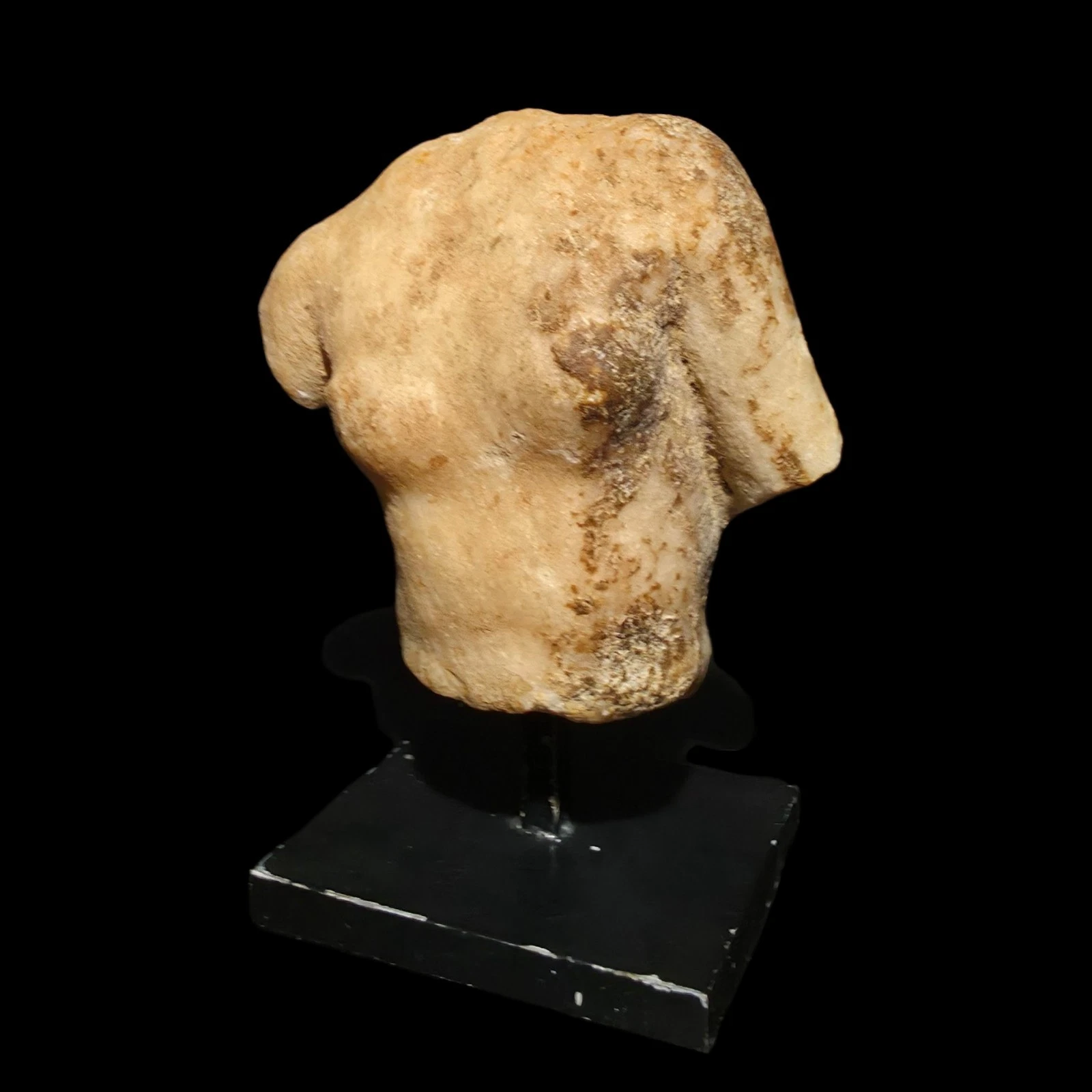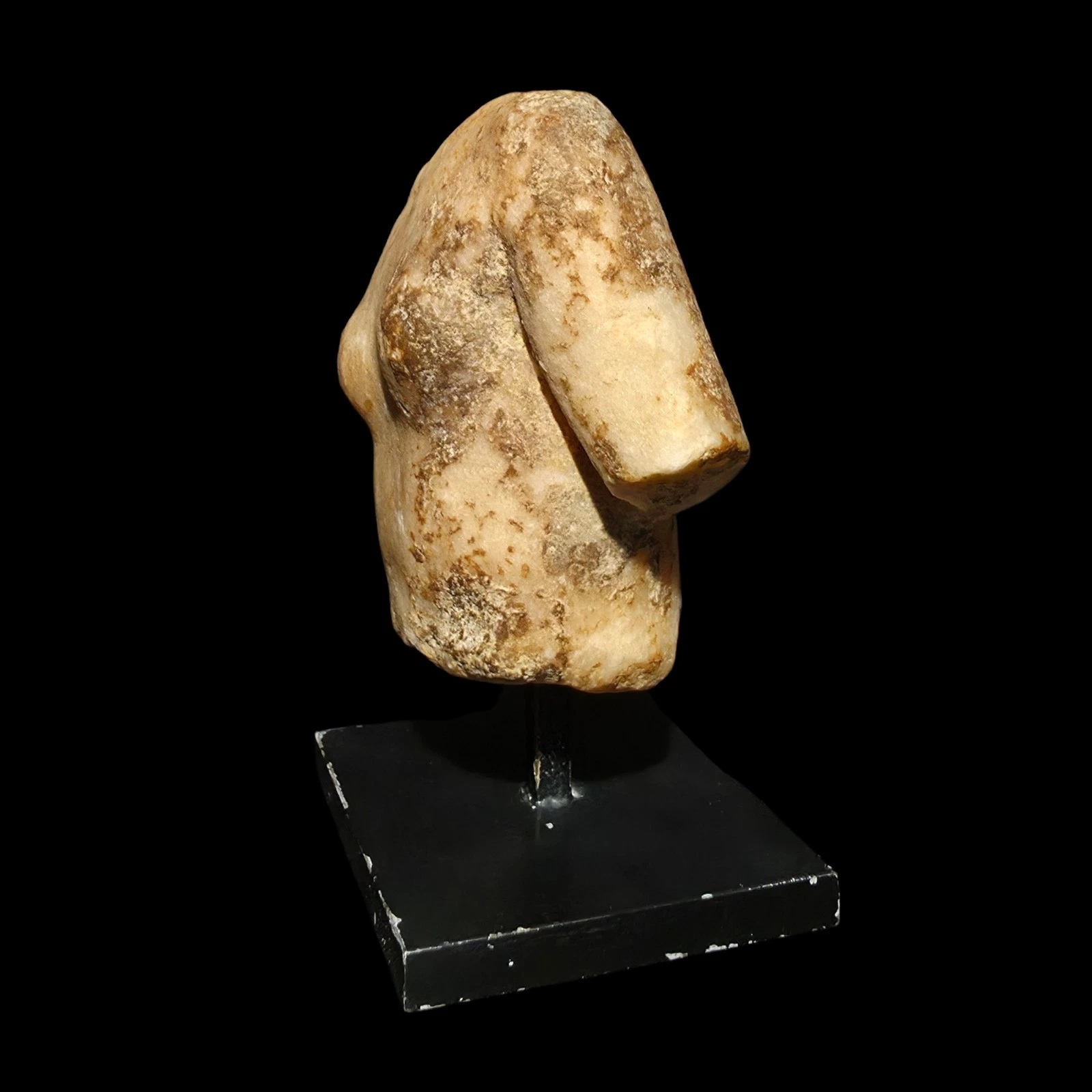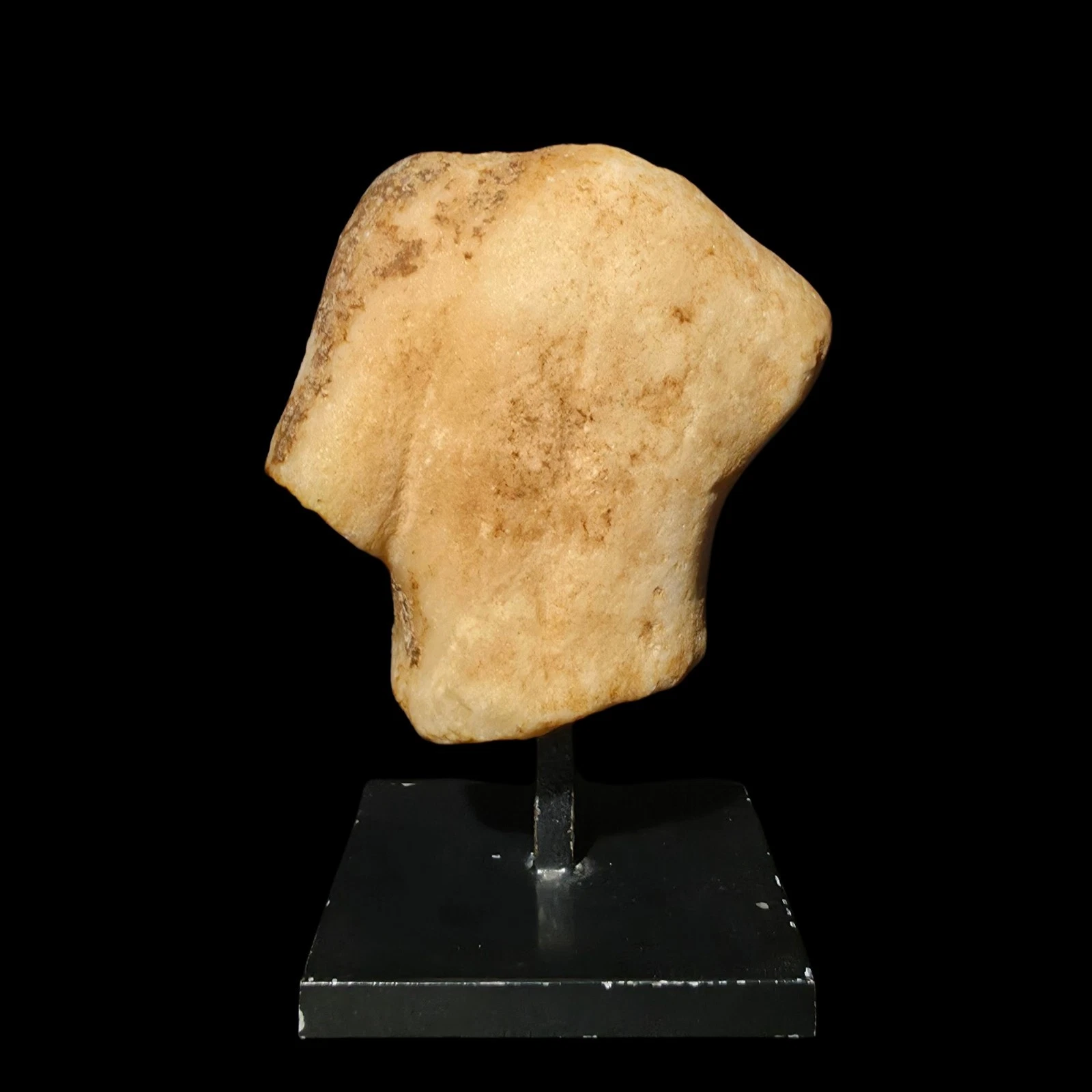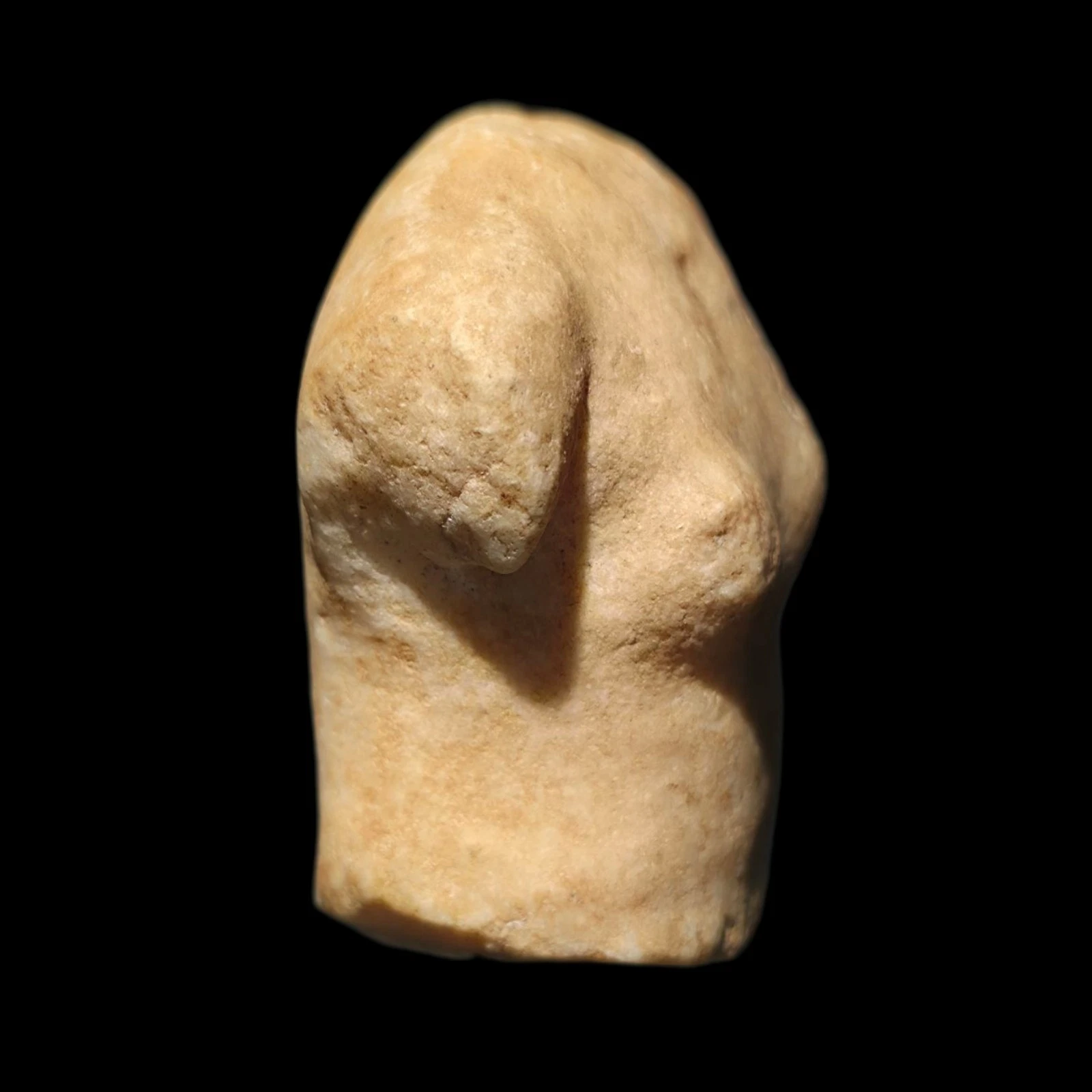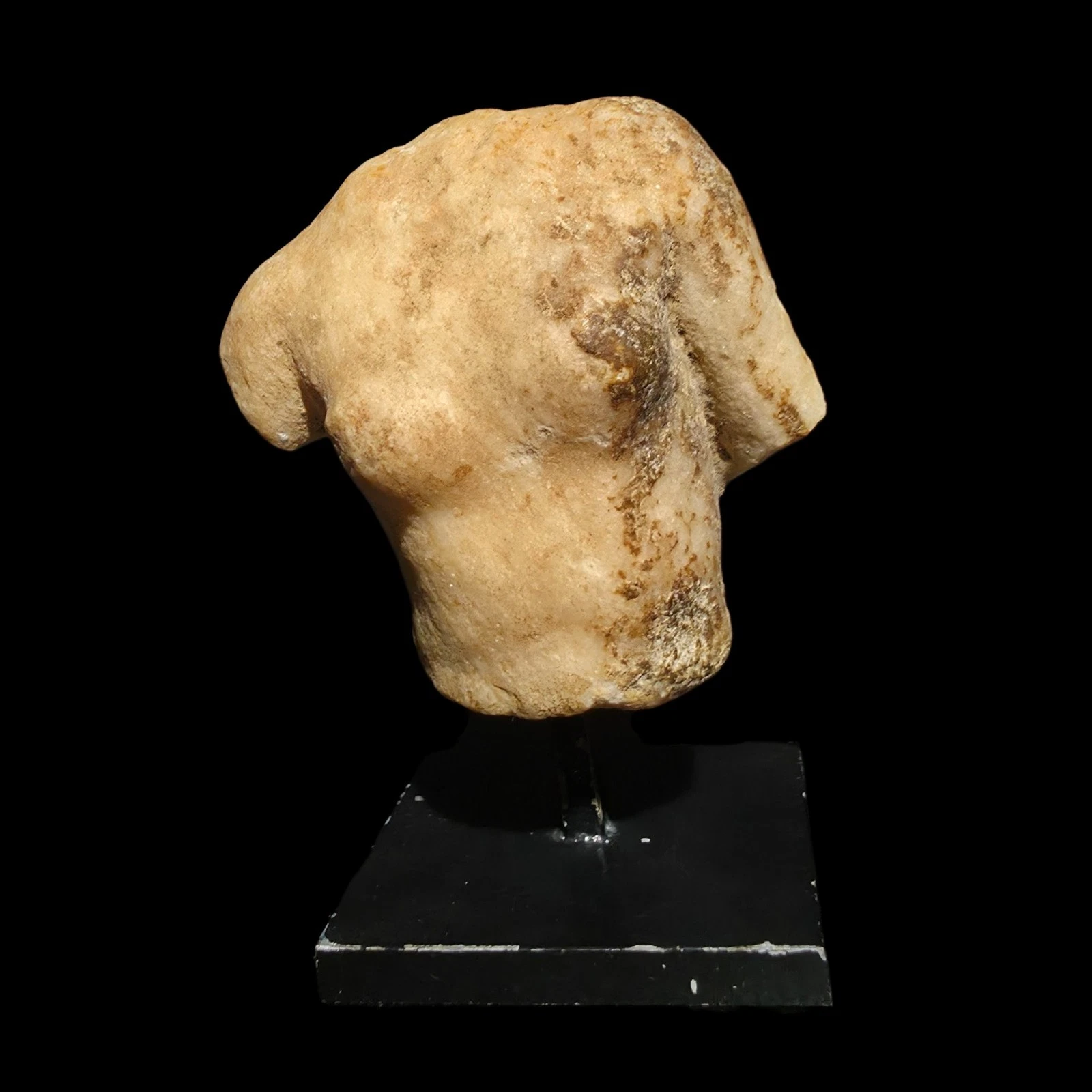
Ancient Roman alabaster Torso
Description
A finely carved alabaster torso fragment from the Roman Imperial period, dating to approximately the 1st–3rd century AD. This sculpture was once part of a larger statue, likely depicting a deity, hero, or noble figure. Even in fragmentary form, it displays the refined anatomical detail and classical proportions that characterize Roman art influenced by earlier Greek traditions.
Culture: Roman Empire
Date: c. 1st–3rd Century AD
Material: Alabaster, in contrast to marble, was much less common. It was primarily imported (often from Egypt or Asia Minor) and existed in limited quantities. Its translucency and soft, veined appearance made it prized for luxury vessels, funerary urns, and small-scale works, not large statues.
Height: 2 3/4 inches (7 cm)
Condition: Fragmentary as shown. Surface wear, weathering, and mineral deposits consistent with age. Mounted on a custom stand for display.
Provenance: Ex. Hudson Valley Auctioneers, NY., Ex. private NY collection

